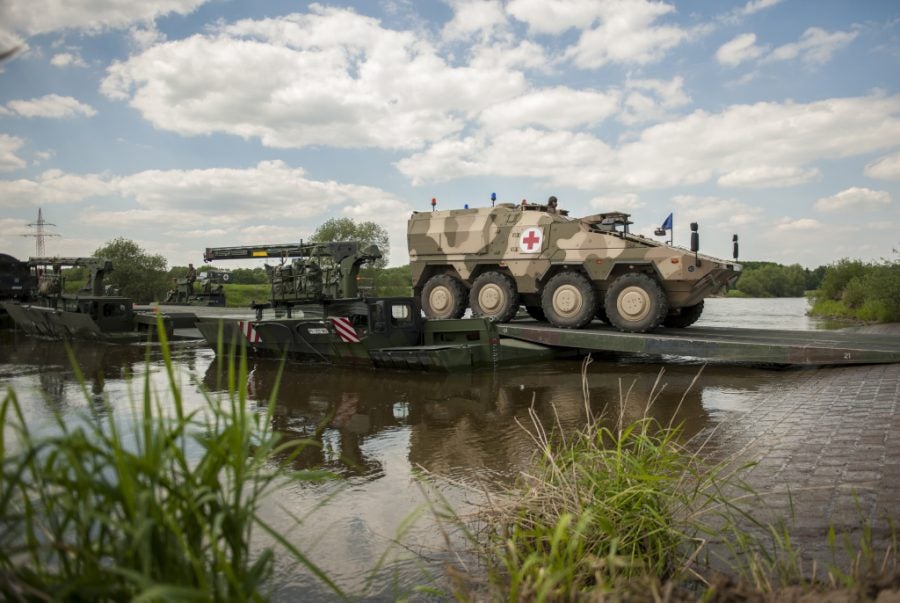Germany has approved €1.23bn ($1.34bn) of funding from the Bundeswehr special fund for production of a new prototype for a guided missile near-range anti-aircraft system by 2028, to be mounted on the Boxer armoured vehicle, the German Federal Ministry of Defense (MoD) announced, 19 January 2024.
The last two pillars of German anti-aircraft capabilty included the Gepard (Cheetah) tank, armed with two 35mm machine cannons as an anti-aircraft turret weapon, intended for low-flying aircraft and helicopters, as well as ground forces, but this was taken out of service in 2010 with the dissolution of the German Army anti-aircraft force. The second pillar was the Roland anti-aircraft missile tank, taken out of service in 2005.
Experience from the war in Ukraine has spurred the rejuvenation of this capacity, and seen discarded Cheetah tanks re-serviced and delivered into operation with Ukraine’s military.
The new prototype anti-aircraft network will require a command post at its core, along with fire control vehicles, radar systems and the anti-aircraft missile vehicles themselves. In the release announcing the new programme it was stated that the IRIS-T SLSInfra will be used as the central munition of the system.
This missile is the ground-to-air variant of the IRIS-T air-to-air missile that entered service with the German Air Force in 2005, after Germany sought to replace the AIM-9 Sidewinder.
The ground-to-air variant has become a staple of air-defence systems in Central and Eastern Europe as part of the Iris-T surface-to-air medium-range launched (SML) air defence system that mounted on a MAN 8x8 truck.
The decision to build a new prototype anti-aircraft system on a Boxer’s is less a reflection on the performance capability of the MAN 8x8 truck than it is a decision motivated by Germany and Nato’s broad adoption of the Boxer family of vehicles, and the synergies from commonality, in terms of simplified logistics, according to GlobalData analysts.
This desired synergy among Boxer type vehicles, the development of an anti-aircraft missile system on a Boxer, and the push for rejuvenating German anti-aircraft capability all map onto an observation of the in-service German Boxer fleet.
There are Boxers built for anti-aircraft using guns; to deliver a Boxer for anti-aircraft capabilities sing missiles would mirror the mixture of effectors that were originally central to the German Army’s anti-aircraft capability, before 2010 and 2005.









